Mikhail Lermontov. Combat officer. Part of 2
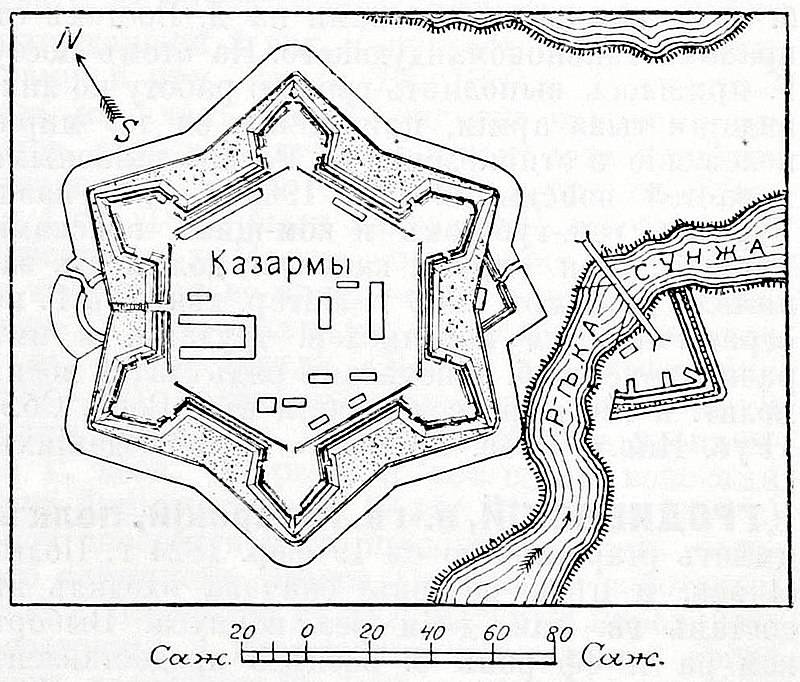
The scheme of the fortress of Grozny
If these forces seem excessive, then this is an illusion, given the realities of the time. Muridism, which was used by rebel leaders as powerful weapon, was able to rally the mountain peoples into the army, which had to be reckoned with. 6 July 1840 of the year Galafeev’s detachment left Grozny in the direction of the village of Big Chechen, near the Argun River, and already 10 arrived in Gekhi on the eponymous river. The opponent during this time did not show any decisive action. But completely empty villages said clearly that the enemy is preparing for a major operation.
On July 11, at dawn, the detachment continued to move west towards Achkhoy. The vanguard, consisting of X-NUMX battalions of the “Kuryntsev” battalions, 3-x companies of sappers, 2-x hundreds of Cossacks and 2-guns, was commanded by Robert Karlovich Freytag, then a colonel. It was behind him that the detachment center under the command of Lieutenant Colonel Alexey Stepanovich Grekulov and the rear guard, commanded by Colonel Baron Alexander Evstafevich Wrangel, moved.
During the entry into the thicket of the Gekhinsky forest, due to the peculiarities of the terrain, the detachment was forced to stretch its forces. It instantly turned them into a convenient target. It was at that moment that the first shots struck. However, the plight was avoided. Firstly, the enemy, apparently, only tested his strength, and, secondly, the soldier’s chains and rifle and bayonet pressure turned out to be more assertive. One way or another, it was Freytag’s avant-garde forces, however, backed by another battalion, desperately ran into hostility, which forced the enemy to retreat. In the nearest open area, General Galafeev rebuilt the squad into battle formation.
Mountain view in the area of Gekhi and Gekhi-Chu
Only later it turns out that the warlord from the enemy was Akhberdil Mohammed, an old “correspondence” acquaintance of Apollo Vasilievich Galafeev. Akhberdil was Mudir (a kind of governor-general) Shamil and a commander of his troops. He participated in the defense of the village of Ahulgo, for the assault of which Galafeev was once awarded the Order of St. Vladimir. Akhberdil's army at that time consisted of fighters from 6000 to 7000, i.e. superior to General Galafeev about two times.
The terrain at the Valerik river did not promise anything good. The Valerik River, which will give the name of that battle, proceeded almost perpendicularly to the road along which the detachment was moving. And, if from the side of the detachment the coast was flat and open, then on the other side of the river the forests grew literally close to the shore, which, moreover, was steeper and steep. In the journal of military operations of the Galafeev detachment, this natural obstacle was even compared to a “bastion front with a deep water moat”.
In order to somehow reduce the risk of an instant ambush, the artillery of the detachment, approaching the distance of the shotgun, opened fire. However, neither a response shot, nor a single movement in the opposite direction was noticed. General Galafeev decided to be more restrained and cautious, so he ordered to push one battalion in each direction, threatening with a sudden attack. As soon as the advanced forces entered the forest behind Valerik, they were ordered to go on the defensive and wait for the entire convoy to approach.
First, the advance guard moved forward, going to the forest at a distance of "half a pistol shot." After him, the gunners began to withdraw from their positions. And at that moment the enemy opened a fierce and concentrated fire. Naturally, the first blow took over the avant-garde, in the forefront of which was Colonel Freytag, showing exemplary composure.
Despite the avalanche of enemy fire that fell on the detachment, the advanced chains not only did not flinch, but also launched an offensive, stopping only at the steep bank of the river. Pre-induced mounds were discovered here, due to which they fired. The companies of the sappers under the command of captain Gernet and the “kurintsy” entering the vanguard, realizing the danger of being killed in this kind of trap, quickly coped with the obstacle. The first line soon broke into the wood behind Valerik.
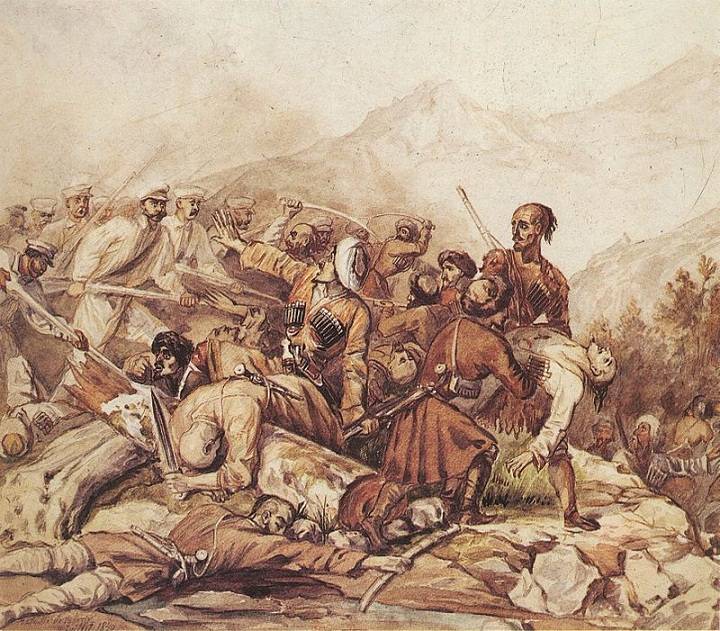
Episode of the battle with Valerik. Part of the picture was written by Mikhail Lermontov himself, later the general view was finished by Grigory Gagarin (it is noteworthy that different techniques are noticeable, on the left is the work of Gagarin, and the central figure of the mountaineer is the work of Lermontov)
For the time being, the gunfire was completely silent, only the human heart-rending cry and the clank of cold weapons were spread. But the desperate attempts of the enemy to throw our troops across the river and overturn them turned out to be in vain. The bayonet attack of the front ranks began to press the mountaineers, forming ticks. The enemy units, which were already not very organized, finally collapsed into separate groups. Some of them tried to get out of the forest to the edge on our side of Valerik, but were immediately met by Russian artillery. Soon, the battle became more similar to the “baiting of wild animals,” as indicated in the journal of hostilities. Trying to escape from the encirclement, the enemy each time ran into the guns or artillery fire of our soldiers.
It would seem that the battle is over. The Russian troops were moving further and further into the forest, leaving the Highlanders cut off from their forces in the rear. But it is worth paying tribute, being in a stalemate, the scattered enemy units found the strength to unite. One group, forcing Valerik, struck at the edge of the wagon train of the expedition Galafeeva from the left flank. True, the infantry battalion quickly eliminated the threat. The second group also attacked carts, but from the left flank. Encountered by grapeshot, the Highlanders had to return to the forest. There was a third attempt to attack, also unsuccessful.
Meanwhile, the offensive in the forest continued. On the left flank, the 1 battalion of the Mingrelsky regiment ran into a well-organized defensive blockage of the enemy. The forces of the battalion began to thin, and, in order to avoid retreat, they sent two companies from the rearguard to help them. After replenishing the situation has changed radically. The Mingrelians eventually took blockages by storm, turning the enemy to flight.
Finally, after almost 8 hours, the unmerciful battle began to subside. Only occasionally single rifle shots could be heard from the forest. Akhberdil Mohammed, being wounded, with the remaining warriors retreated. In the forest more often and under the rubble, only the corpses of the dead remained. But the hard work of soldiers was not accustomed to giving respite, so the engineers, who only recently saved the vanguard from the traps of enemy debris, began to build a crossing for carts.
When Valerik. Funeral killed July 12 1840 year. Painting by Mikhail Lermontov
Recently, some ethnically biased historians have been trying to betray the battle of Valerik almost as a victory for the Chechens who supported Shamil. To put it mildly, this is incorrect. First, by that time, not only Chechens were in the army of Shamil, but also Galashevtsy (a social-territorial association among the Ingush). Secondly, despite the numerical superiority, advantageous defensive positions, which also strengthened the debris, the detachment of Ahberdil Muhammad could not solve any of the tasks assigned to them. They could not stop the expedition of Galafeev at the Valerik’s turn, for which they were calculated, they could not. To cause significant damage to our soldiers or to significantly delay them, Ahbergil also failed. It didn’t happen that the rebellious villages behind Valerik didn’t even have time to collect belongings and cattle and leave away about the advancing Russian troops. Therefore, despite the personal courage of the mountain soldiers, there was no organized defense, and, accordingly, there was no reason to talk about victory.
What was the role of Lermontov in that battle? At first it was believed that Mikhail Yuryevich in that battle was an officer in the so-called “Dorohov” team of hunters, named after their commander Rufin Ivanovich Dorokhov. However, the command of hunters Lermontov took much later.
In the battle of Valerik, Mikhail Yuryevich had an equally important task. Apollon Vasilievich ordered Lermontov to maintain communication between the detachment's advanced chains and the expedition command. Thus, throughout the battle, Lieutenant Lermontov had to constantly drive between the vanguard on the front line of the front and the rear, constantly under fire, forcing the river.
In the journal of military operations Galafeev wrote:
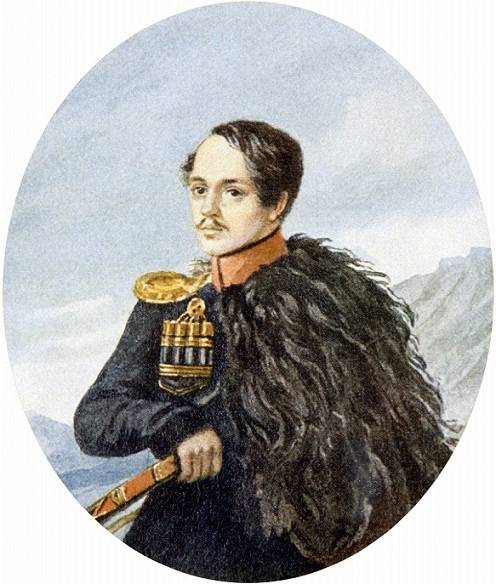
Self-portrait of Lermontov
Later in the report to Adjutant General Pavel Khristoforovich Grabbe, the same Galafeev mentioned Lermontov in this way:
For the battle on Valerik, lieutenant of the Tenginsky regiment, Mikhail Lermontov, was even presented with the Order of St. Vladimir the 4 degree with a bow. But the authorities replaced this high award with a more modest Order of St. Stanislav 3 degree, having formulated the refusal by saying that "the lieutenant has no orders." The officer and poet himself perpetuated that battle in verse (“Valerik”, also called this poem in the first lines “I write to you by chance ...”) and in painting, because Lermontov was also a good artist.
After defeating the enemy at Valerik, General Galafeyev sent his detachment to the fortress of Grozny, making a raid on the local auls. Alas, the main task of the Chechen detachment, as such expeditions were called, did not fulfill, and it was not possible to capture Shamil himself.
To be continued ...
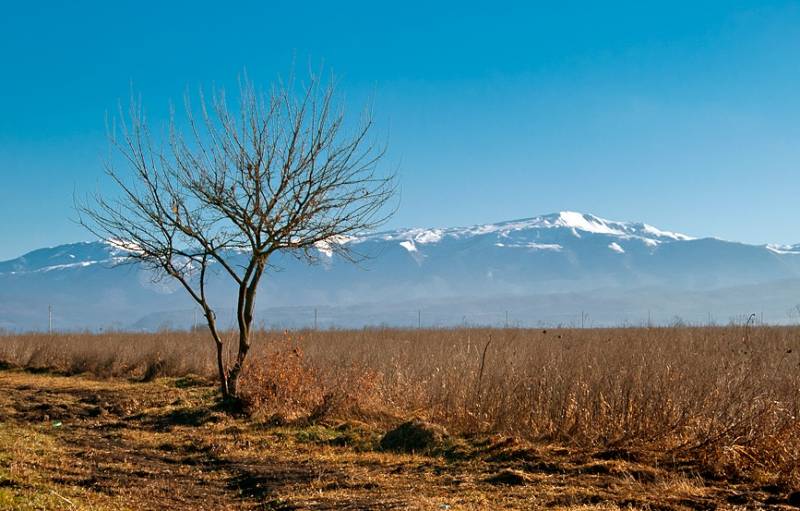
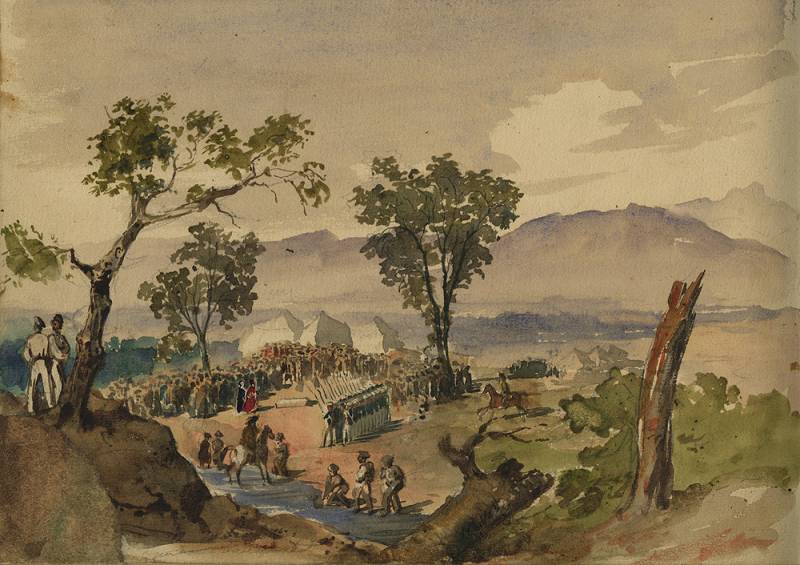
Information